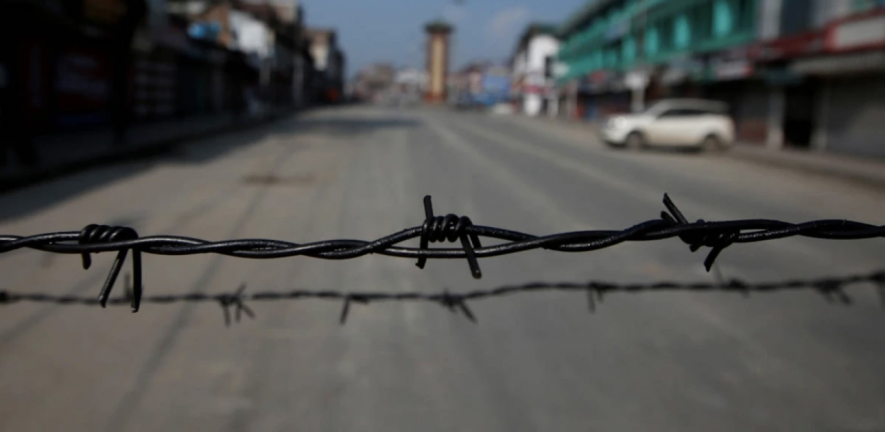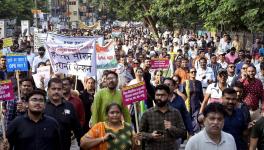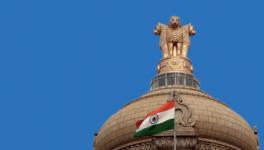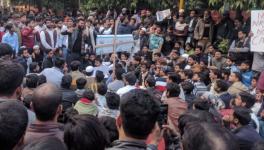Indiscriminate and Excessive Curfews Under Section 144 of CrPC are Unconstitutional

Representational Image.
Curfews imposed under the Section 144 of the Code of Criminal Procedure for long time periods are reflective of a culture of political intolerance, and disregard of Constitutional principles and the rule of law.
—–
Which are the recent instances of excessive and arbitrary orders under Section 144 of the Criminal Procedure Code?
Last month, Section 144 (power to issue order in urgent cases of nuisance of apprehended danger) of the Code of Criminal Procedure was invoked in Bishnupur and Churachandpur districts of Manipur to impose a two-month long curfew. It was reported that the order was issued after a vehicle was set on fire by a group of people in the Phougakchao Ikhai area of Bishnupur district and the Kangvai area of Churachandpur district. According to the state authorities, these instances took place due to the arrest of leaders of a student union demanding more autonomy for hilly areas. However, the order fails to provide any of these reasons.
This is not the first time a long curfew was imposed via an inadequately reasoned order. In March, a one-month long curfew under section 144 was imposed in Kota district of Rajasthan. One of the reasons for imposing the curfew was to prevent people from watching the Bollywood film The Kashmir Files in theatres as it was apprehended that watching the movie can instigate some people, which would result in disturbance of public order.
In June, another one-month long curfew was imposed across Rajasthan after a tailor was beheaded for making a social media post in support of politician and lawyer Nupur Sharma. This curfew was, however, revoked after 12 days.
Why are such orders worrisome?
A section 144 order directly impacts constitutional guarantees of freedom of speech and expression, freedom of peaceful assembly and freedom of trade. These orders are a cause of concern for two reasons: first, they are poorly reasoned; second, these orders span over months, therefore being excessive. With such instances happening frequently, it becomes essential more than ever to question the validity of such State action.
These orders are a cause of concern for two reasons: first, they are poorly reasoned; second, these orders span over months, therefore being excessive. With such instances happening frequently, it becomes essential more than ever to question the validity of such State action.
Section 144 gives power to certain executive magistrates to issue an order directing any person to abstain from doing a certain act under where there is a likelihood that the person may cause “obstruction, annoyance or injury to any person lawfully employed, or danger to human life, health or safety, or a disturbance of the public tranquillity, or a riot, or an affray.” The order issued is temporary in nature, and cannot be issued for more than two months at a time.
The action taken under this section is characterised by the emergency of the situation and the graveness of consequences if no action is taken. It is an extraordinary measure where fundamental rights can be restricted without giving ex ante opportunity of hearing if the situation demands so.
What have constitutional courts had to say about the power under Section 144?
The constitutional validity of this provision has been challenged on multiple occasions. Most significantly, in 1970, in the case of Madhu Limaye versus SDM, Monghyr & Ors. (1970), a Constitution bench of the Supreme Court held that mere disobedience of the law is not enough, and there must be obstruction, annoyance, danger to human life, health or safety or riot or an affray for passing an order under the section. The court interpreted each ground mentioned in the section in such a manner that a link was established between that ground and public order. For instance, the court interpreted “annoyance” to be an act of such a scale that it results in public disorder. Therefore, the underlying threshold for invoking this power is disturbance of public order or public safety.
In several judgments, the Supreme Court has also made it categorically clear that each and every order issued under the section must also withstand the threshold of reasonable restrictions on fundamental rights. This means that each order issued by the Magistrate is subject to the proportionality standard. Additionally, it was held by the Punjab and Haryana High Court in Municipality Committee, Dhanaula versus District Magistrate, Sangrur (1967) that each order under section 144 must state the material facts and findings of the magistrate, and a mere reproduction of the language given in section 144 in the order is not a sufficient foundation of the order.
How have the recent Section 144 orders violated Constitutional checks on the power under the provision?
In case of the orders issued in Manipur, the Magistrates failed to state any material facts and circumstances which impel invocation of power under section 144. Consequently, the orders do not reflect any reasoning or application of mind by the Magistrates. Both the orders are identical, and only contain the language of section 144. It was only from news reports and statements given by state officials that one could gather the facts and circumstances.
It must also be noted that, apart from the facts stated above, no other circumstances prevailed which necessitated invocation of such an extreme measure. Does an incident like the burning of vehicles warrant a two-month long curfew? The proportionality test requires the least restrictive measure to be adopted to achieve the desired goal.
In 1970, a Constitution bench of the Supreme Court held that mere disobedience of the law is not enough, and there must be obstruction, annoyance, danger to human life, health or safety or riot or an affray for passing an order under section 144. In subsequent judgments, the court has also made it categorically clear that each and every order issued under the section must also withstand the threshold of reasonable restrictions on fundamental rights.
Under the circumstances of the instances referred to earlier, nothing required a blanket curfew of one or two months as the least restrictive measure to maintain public order and tranquillity. Increased deployment of police in the respective areas, or a curfew with limited geographical extent, or a curfew of shorter duration are some of the less restrictive measures available with the government.
Similarly, for the curfew imposed in Kota, the order contains material facts and circumstances, and the reasoning for imposing the shutdown. However, the reasoning is erroneous. The order states that there is an apprehension that a public order situation may arise if people watch The Kashmir Files in theatres, and there are multiple festivals coming up during the month which can result in a public order situation. Pertinently, there is no emergency or urgency in the situation that the police are left with no recourse but to impose a curfew.
The emergency of situation and the graveness of consequences are sine qua non for invoking the power. It must be shown that, under the prevailing circumstances, a public order situation is inevitable if no action is taken under section 144. Further, it must be so imminent that imposing a curfew is necessary and unavoidable. However, neither of the two conditions were satisfied.
What larger trends these orders reflect?
These orders are reflective of the larger problem of increased control on liberties that the country is facing. When blanket orders like these are imposed, freedom of speech and expression, and freedom of assembly become an exception instead of being the norm. It puts the executive in a position to effectively pre-censor freedoms. A curfew to stop people from watching a movie, for all practical reasons, amounts to banning a movie in a region, as theatres are the primary manner in which movies reach the masses.
Similarly, in the backdrop of the Manipur curfew is the ongoing agitation by the All Tribal Students’ Union Manipur. The Union has been actively protesting as the Manipur (Hill Areas) Autonomous District Council (Amendment) Bill 2021 was not tabled in the monsoon session of the Manipur Vidhan Sabha. The Bill envisages to bring increased economic and administrative autonomy in the hill areas of the state, and bring development there at par with the Imphal Valley region. A two-month long curfew in this context clearly reflects the intention to dispel any dissent or resistance towards the government action, or inaction, in this case.
Such instances are troublesome for many reasons, but most significantly, for being excessively broad in terms of duration, and for being tainted with mala fide intent to stifle free speech. It is reflective of a culture of political intolerance coupled with the executive’s disregard for the rule of law.
In scenarios like these, expectations are placed on the judiciary to act in a timely and firm fashion. The Karnataka High Court’s judgment in Sowmya R. Reddy versus State of Karnataka (2020) enunciates the critical scrutiny section 144 orders need to be placed under. The judgment places much-required tangible limits on the magistrates’ power to invoke section 144. It held that an order under Section 144 must demonstrate satisfaction of objective conditions of: (i) least restrictive measure, (ii) proportionality, and (iii) urgency. The judgment exemplifies the crucial role of the judiciary in restraining the executive by placing requisite checks on its extraordinary power.
When blanket orders like these are imposed, freedom of speech and expression, and freedom of assembly become an exception instead of being the norm. It puts the executive in a position to effectively pre-censor speech.
Extraordinary executive powers are of an extraordinary nature not only because of the nature of facts and circumstances they are being applied to. They are extraordinary because of the manner in which they are exercised. However, such an application of these powers is still bound by constitutional principles, and cannot be exercised in an arbitrary manner. As a society dedicated to democratic values and the rule of law, all the requisite conditions laid down in the law to exercise the power must be respected in letter and spirit.
Rattanmeek Kaur is a graduate in law and arts from the Gujarat National Law University, Gandhinagar.
Get the latest reports & analysis with people's perspective on Protests, movements & deep analytical videos, discussions of the current affairs in your Telegram app. Subscribe to NewsClick's Telegram channel & get Real-Time updates on stories, as they get published on our website.























